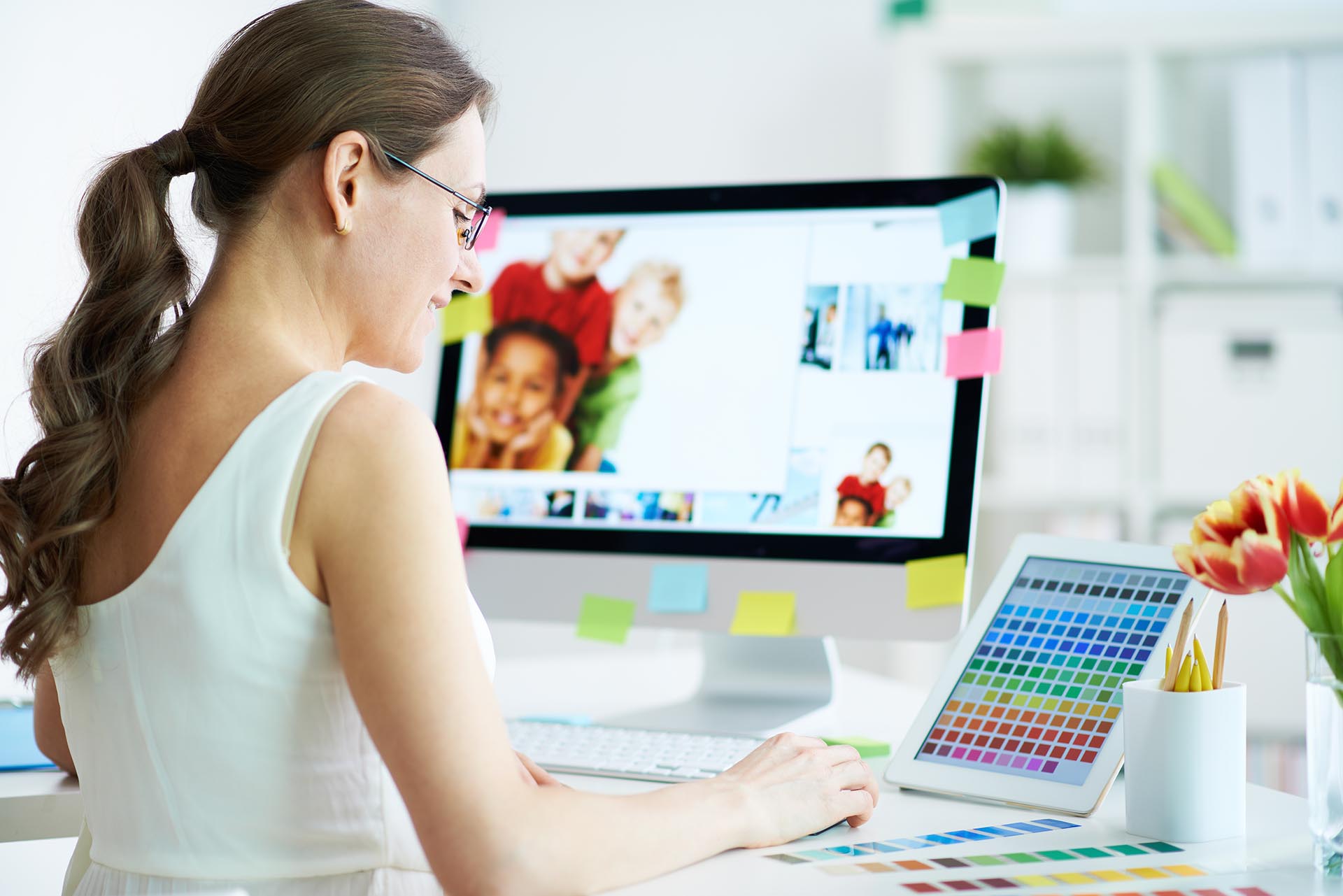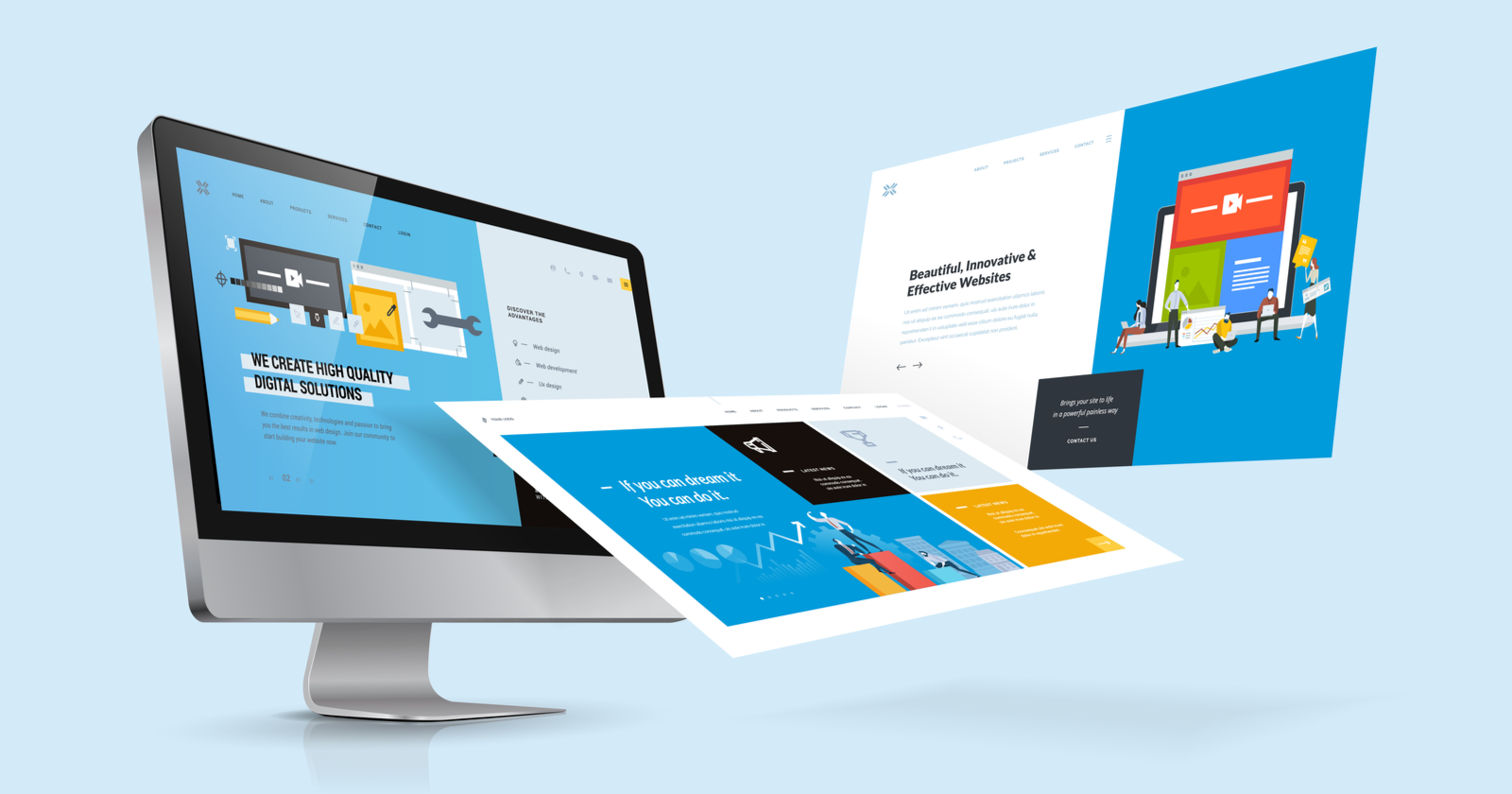Exploring the Different Kinds Of Web Layout and Their Unique Benefits
The landscape of Web design incorporates a range of designs, each offering unique advantages that deal with various customer requirements. Flat and minimalist layouts emphasize quality, while responsive and material layouts improve convenience across devices. Typography-driven and illustratory approaches intend to enhance interaction and psychological vibration. Comprehending these diverse kinds can substantially impact user experience and brand perception. What lies below the surface area of these design options?
Minimal Website Design

Minimalist Web design typically integrates a minimal color combination and simple typography, which not only improves aesthetics yet likewise reinforces brand identification. The lowered complexity can bring about faster packing times, further boosting user contentment. Additionally, by minimizing aesthetic clutter, individuals can engage with material extra successfully, resulting in enhanced understanding and retention. Generally, minimal Web style promotes a seamless customer experience, making it a preferred choice for brands aiming to communicate clarity and expertise in their on-line existence.
Responsive Web Layout
Responsive website design has become vital in today's electronic landscape, making certain mobile compatibility for individuals throughout different devices. This strategy considerably improves individual experience by offering seamless navigating and availability, no matter of display size. As even more individuals access the Web on smart devices and tablets, the relevance of responsive style remains to grow.

Mobile Compatibility Importance
As smart phone use remains to increase, ensuring web sites are suitable with various screen sizes has actually come to be important for effective communication and involvement. Mobile compatibility, typically accomplished through responsive Web style, enables sites to adjust flawlessly to mobile phones, tablet computers, and various other tools. This adaptability not just gets to a wider target market however additionally improves brand integrity. A web site that functions well on mobile gadgets reflects professionalism and attention to customer needs. In enhancement, online search engine prioritize mobile-friendly sites in their positions, making compatibility an essential aspect for online visibility. By purchasing mobile compatibility, companies can improve their digital presence and deal with the expanding variety of users who access info on the move. Focusing on mobile-responsive style is important in today's electronic landscape.
Improved Customer Experience

Apartment Style
Flat layout is a minimal method to website design that highlights simplicity and clarity. By eliminating three-dimensional elements such as appearances, darkness, and gradients, flat design produces a visually enticing interface that focuses on web content and capability. This design advertises an intuitive navigating experience, as individuals can promptly identify essential functions and activities without diversion.
One of the key advantages of flat layout is its responsiveness across various gadgets and screen sizes. Its uncomplicated layouts and tidy lines adjust effortlessly, guaranteeing a consistent experience for customers on mobile, tablet, or desktop systems. Furthermore, flat style typically integrates strong shades and typography, enhancing visual impact and brand recognition.
The simplicity fundamental in flat layout leads to much faster packing times, which adds positively to customer satisfaction. Generally, flat design continues to be a preferred choice for contemporary Web development, lining up with modern aesthetic choices while providing outstanding usability
Material Layout
Material Style represents a design language developed by Google that concentrates on developing a natural and instinctive customer experience throughout electronic platforms. This strategy stresses using grid-based formats, responsive computer animations, and deepness results such as lighting and shadows, which aid to develop a feeling of hierarchy and spatial partnerships. By resembling the real world, Material Layout permits individuals to interact with electronic user interfaces in a more interesting and all-natural way.
Among the vital advantages of Product Layout is its versatility across different devices and display dimensions, making certain a regular experience for users. In addition, it promotes a clear aesthetic language that improves functionality, making it much easier for users to navigate intricate applications. The incorporation of vivid colors and vibrant typography additionally plays an essential role in drawing attention to crucial components, therefore enhancing total individual interaction - branding. Subsequently, Product Style has actually become a popular option among designers seeking to create practical and aesthetically appealing web sites
Typography-Driven Design
Typography-Driven Layout concentrates on the critical use kind to improve the aesthetic and functional aspects of a website. This style method prioritizes typefaces, font sizes, spacing, and power structure to develop aesthetic interest and overview customer experience. By thoroughly picking typography, developers can share brand name identification and stimulate feelings, making the content a lot more available and appealing.
Efficient typography improves readability and use, ensuring that users can easily take in and navigate the website information. The appropriate mix of kind can also establish a clear visual pecking order, permitting individuals to swiftly identify essential messages and calls to action.
Furthermore, a typography-driven technique can be adapted to numerous tools, guaranteeing uniformity throughout platforms. This versatility is vital in today's multi-device landscape, where individual experience is critical. Inevitably, Typography-Driven Style serves not only as an imaginative option however likewise as a functional component that considerably influences an internet site's efficiency.
Illustratory Web Layout
Illustratory website design utilizes aesthetic narration techniques that can significantly improve user involvement. By integrating unique images, internet sites can produce an unforgettable brand identification that resonates with their audience. This technique not only captivates visitors yet additionally connects messages in a visually engaging way.
Aesthetic Storytelling Strategies
A wide range of Web developers use aesthetic narration strategies to develop appealing and immersive individual experiences. This technique integrates images, typography, and layout to tell a tale that reverberates with individuals on check my site a psychological level. By incorporating compelling visuals, designers can properly share messages and evoke feelings, guiding visitors through a brand name's journey. Infographics, computer animations, and interactive components offer to improve stories, making intricate information extra available and memorable. Additionally, visual storytelling can develop a natural brand name identification, as consistent imagery and motifs strengthen core worths and messages. Inevitably, this strategy not just mesmerizes individuals however also promotes a deeper connection with the web content, urging exploration and retention. With knowledgeable application, aesthetic storytelling changes typical Web experiences into meaningful and vibrant interactions.
Enhancing Customer Engagement
Efficient Web style substantially enhances individual involvement by leveraging illustrative aspects that attract focus and foster communication. Images can simplify intricate ideas, making them extra friendly and remarkable for customers. They damage the uniformity of text-heavy web pages, producing aesthetic breaks that welcome expedition. Furthermore, one-of-a-kind pictures can evoke feelings, encouraging users to attach with the web content on a deeper degree. Interactive aspects, such as animations or float results, can helpful hints additionally improve interaction by welcoming customers to get involved actively as opposed to passively taking in info. This technique not just keeps site visitors on the website longer however additionally raises the possibility of return visits. Ultimately, effective illustratory website design transforms the user experience, making it extra impactful and pleasurable.
Branding With Image
Visual elements play a significant role fit a brand's identity, and images are an effective tool in this respect. Illustratory website design enables brand names to share their special character and worths through custom-made artwork. This method fosters a deeper emotional link with the audience, improving memorability and interaction. By incorporating pictures, brand names can differentiate themselves in a jampacked industry, producing a distinctive aesthetic story that resonates with their target market. Additionally, images can simplify complicated principles and make web content much more available, efficiently communicating messages in an appealing fashion. On the whole, branding via image not just enriches the customer experience but additionally strengthens brand acknowledgment, making it a useful approach for businesses intending to establish a solid on-line existence.
Regularly Asked Questions
Just how Do I Select the Right Web Layout Type for My Service?
To pick the ideal Web style kind for a company, one must evaluate goals, target audience, and market requirements. Examining customer experience and performance will certainly assist the selection process for excellent involvement and efficiency.
What Equipment Are Finest for Developing Different Website Design Styles?
Popular devices for creating varied website design styles consist of Adobe XD, Figma, Map Out, and WordPress. Each deals special attributes tailored to different design requirements, allowing designers to construct functional and visually appealing websites successfully.
Exactly How Much Does Expert Website Design Typically Cost?
Expert Web layout normally costs in between $2,000 and $10,000, depending on complexity, attributes, and designer expertise. Customized remedies and continuous maintenance might raise expenditures, while design templates can offer even more economical alternatives for simpler jobs.
Can I Combine Several Website Design Types Properly?
Yes, incorporating several website design types can be efficient. By integrating elements from different styles, designers can click this produce distinct, engaging customer experiences that accommodate varied audiences while improving functionality and visual charm.
Just How Do Design Patterns Influence Customer Experience and Interaction?
Design fads significantly influence user experience and engagement by improving visual charm, enhancing navigating, and cultivating emotional links - website development. Remaining upgraded with patterns enables developers to develop user-friendly user interfaces that resonate with customers and encourage prolonged communications
Minimal and level styles emphasize quality, while responsive and worldly designs boost convenience across devices. It may seem counterintuitive, minimalist Web style emphasizes simplicity to boost individual experience. Receptive Web style plays a necessary function in improving individual experience by making certain that a site adapts flawlessly to various display dimensions and devices. Level design is a minimal technique to Web style that stresses simplicity and quality. Material Layout represents a style language created by Google that focuses on creating a user-friendly and natural customer experience throughout electronic systems.